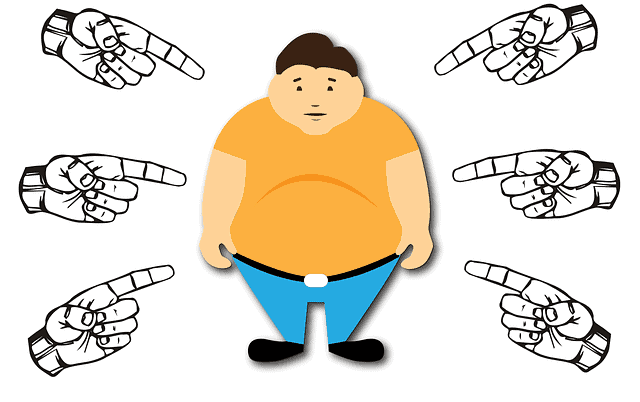Obesity has a profound impact on joint health, often leading to chronic pain that can significantly reduce quality of life. The excess weight associated with obesity places additional pressure on joints, particularly those that bear the body’s weight. These include the hips, knees, and ankles.
This increased load can accelerate the wear and tear on joint tissues, leading to conditions such as osteoarthritis. Obesity doesn’t just mechanically overload the joints but promotes systemic inflammation.
Adipose Tissue
Large amounts of adipose tissue can produce inflammatory mediators that further degrade joint tissues and intensify pain sensations. This inflammatory state complicates the body’s natural healing processes and can perpetuate the cycle of pain and disability.
The relationship between obesity and joint health involves mechanical, biochemical, and inflammatory pathways. As the prevalence of obesity continues to rise globally, understanding its role in joint health and chronic pain is increasingly essential to develop effective prevention and management strategies. The goal is to reduce the burden of joint diseases and improve the overall well-being of obese people.
Obesity and Joint Health
Excess body weight is a significant risk factor for joint problems. It includes osteoarthritis—the most common form of arthritis affecting millions worldwide. Obesity exerts extra pressure on weight-bearing joints. Examples are the knees, hips, and lower spine, which can lead to chronic pain and disability.
The Weight to Joint Force Ratio
For every pound of weight gained, the knees take on an added force of four pounds during each step. It means that even a tiny amount of weight loss can considerably reduce stress on these joints.
Consider a person who is 10 pounds overweight: each knee bears an extra 40 pounds of force with regular walking. Over time, this persistent overload can cause the cartilage, which cushions the joints, to wear away.
Without this protective tissue, bones rub against each other, leading to pain and reduced mobility. In the hips, obesity increases stress and alters gait and biomechanics, which can further deteriorate joint health.
Spinal Pressure
The spine also suffers from the added weight, particularly in the lumbar region, leading to lower back pain—a common complaint among individuals with obesity.
Increases In Joint Replacement Surgery
To illustrate the impact of obesity on the joints, one can look at the increased rates of knee and hip replacements in this population.
These surgical procedures are more common among those with obesity than those of an average weight. The connection is clear. The additional force exerted on the joints by excess body weight can lead to their accelerated degradation. Consequently, there’s a need for medical intervention.
Understanding this relationship underscores the importance of weight management in preserving joint health and preventing the chronic pain associated with degenerative joint diseases.
Obesity Joint Health – Related Chronic Pain and Osteoarthritis
The link between obesity and chronic pain is well established, particularly concerning conditions like osteoarthritis and back pain. These chronic pain conditions often create a cycle that can exacerbate obesity. This occurs where pain leads to reduced activity, which in turn can lead to further weight gain and more pain.
Osteoarthritis (OA), a degenerative joint disease, is one of the most prevalent pain-related conditions exacerbated by obesity. Fat tissue is not an inert substance. Fat is metabolically active and capable of producing hormones and chemicals that can promote inflammation.
In osteoarthritis, the additional body weight increases the mechanical load on the cartilage in joints such as the knees and hips. Over time, this extra pressure can accelerate the breakdown of cartilage, leading to pain, stiffness, and other OA symptoms.
Biomechanical Implications
However, the influence of obesity on chronic pain is not just mechanical; it also has biochemical implications. Adipose tissue secretes pro-inflammatory cytokines like tumor necrosis factor-alpha (TNF-alpha) and interleukin-6 (IL-6), contributing to OA’s pain and inflammation.
Additionally, adipokines, cell-signaling proteins secreted by fat tissue, can influence pain perception and inflammatory responses. Obesity is also a significant risk factor for back pain, notably lower back pain.
Spinal Damage
The spine, by design, distributes weight and supports movement, but excess weight can strain and damage the spine’s structures. The intervertebral discs, which act as shock absorbers between the vertebrae, can become compressed due to excess weight, leading to herniation or bulging.
This compression can cause pain and may even lead to nerve impingement, resulting in sciatica or other forms of radicular pain. In individuals with obesity, the chronic low-grade inflammation from excess adipose tissue can also contribute to muscle pain and joint disorders.
Pain Perception and Tolerance
Obesity can affect pain perception and pain tolerance, making pain management more challenging. It is essential to address obesity as part of a comprehensive approach to managing chronic pain.
Management includes not only treating the pain itself but also addressing the underlying factors that contribute to obesity. Lifestyle interventions, physical therapy, and, in some cases, medications or surgery may be part of the management plan.
By reducing weight, individuals can lessen their body’s mechanical and inflammatory stresses, decreasing pain and improving overall function and quality of life.
Obesity Joint Health Prevention and Management of Related Problems and Chronic Pain
Preventing and managing obesity-related joint problems and chronic pain requires weight management, incorporating exercise, and maintaining a healthy diet. These proactive steps are not only crucial for reducing the risk of developing chronic pain but also essential in managing pain if it’s already present.
Managing weight is pivotal in preventing excess mechanical stress on joints. Even a modest weight loss can relieve considerable pressure from weight-bearing joints like the knees and hips.
As mentioned, every one pound of weight loss can result in four pounds of pressure lower off the knees. This reduction can significantly delay the progression of osteoarthritis and reduce pain levels.
Benefits of Exercise On Obesity Joint Health
Exercise plays a dual role—it facilitates weight loss and strengthens the muscles around the joints, improving joint stability and decreasing pain. Low-impact exercises such as swimming, cycling, and walking can yield high dividends for joint health without exacerbating pain. For those with chronic joint pain, consulting with a physical therapist to tailor an exercise program that’s both effective and manageable is beneficial.
Balanced Diet
A balanced diet is integral to weight management and can also have anti-inflammatory effects. Foods rich in omega-3 fatty acids, such as fish and flaxseed, can reduce inflammation.
Fruits and vegetables, loaded with antioxidants, can also help combat inflammation. On the other hand, processed foods and those high in sugar can increase inflammation and, thereby, pain.
Feel Empowered to Implement These Strategies
It’s essential to know these strategies and feel empowered to implement them. Consider weight management, exercise, and a healthy diet as the pillars holding up the structure of good health.
Small, consistent changes in daily routines can lead to significant improvements in joint health and a reduction in chronic pain. It’s not about immediate, drastic changes but sustainable steps that continue in the long run. The journey to better joint health and pain management starts with the belief that change is possible, followed by action towards that belief, no matter how small.
Looking for relief from stiff joints?
Eat this…

Legal Disclaimer: The content provided on obesitywoes.com is for general informational purposes only. It is not intended as health advice, nor does it constitute a medical practitioner-patient relationship. The information may not be accurate, complete, or updated at the time of viewing. Obesitywoes.com and its authors disclaim all liability for any actions taken or not taken based on the content of this site. Always consult with a registered medical practitioner in your area before making any health decisions. This website may contain links to other websites. We are not responsible for the content, accuracy, or opinions expressed on such websites, and such websites are not investigated, monitored, or checked for accuracy or completeness by us.






